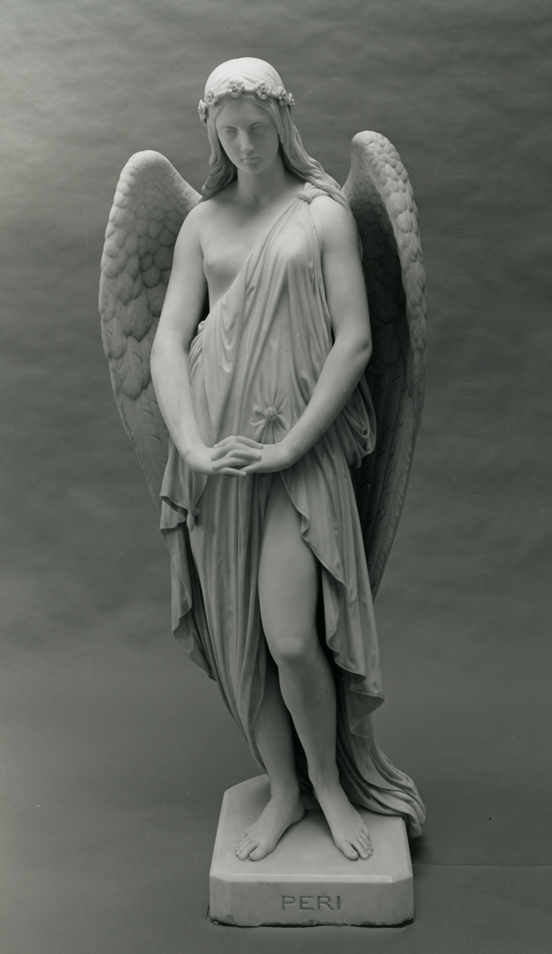
Peri at the Gates of Paradise
Thomas Crawford
Thomas Crawford began carving architectural ornaments and funerary monuments about 1832 for the firm of Frazee and Launitz in New York. In 1835 he traveled to Rome, where he spent virtually the rest of his life. Initially he modeled portrait busts of Americans on the Grand Tour and studied under the Neoclassical sculptor Bertel Thorwaldsen. His first major work, "Orpheus and Cerberus" (1843), was exhibited to great acclaim in Boston. For the next decade, before his life was cut short by a brain tumor, Crawford's ideal, classically inspired figures were sought after by patrons in Europe and America. He produced major sculpture groups for the city of Richmond, Virginia, and for the U. S. Capitol. "Peri" is a variant of the angelic theme popular with American sculptors of the mid-nineteenth century. In this piece, the story of the 'peri,' a fallen angel derived from Persian religious belief, was inspired by an 1817 poem by the Irish writer Thomas Moore. Although in Crawford's marble, she appears calm and restful, in the poem she is disconsolate after repeated attempts to regain entrance to paradise. She succeeds only after offering the tears of a repentant sinner to God. The work, completed by Crawford's studio assistants, was commissioned by the Philadelphian Arthur A. Burt.
Artist
Date of Birth
(1814-1857)
Date
1854-1856
Medium
Marble; carved in 1856-57
Dimensions
69 3/4 x 27 3/4 x 24 in. (177.165 x 70.485 x 60.96 cm.)
Accession #
1917.9
Credit Line
Bequest of Clarissa A. Burt
Copyright
No known copyright restrictions
Category
Subject
More by
We're so excited you're planning to visit PAFA!
Make time for art — visit us Thursday to Sunday.
Before reserving your tickets, please review helpful information about museum hours, accessibility, building access, and special admission programs.
If you have any questions, feel free to reach out to us at visitorservices@pafa.org — we’d love to help!